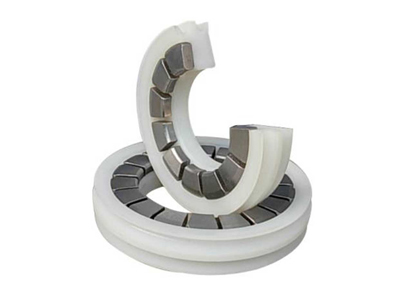What Is the Importance of Sealing?
Despite their low cost, seals are often one of the most important components of a product. Seals must be carefully designed and manufactured to ensure superior product performance. This section reviews the issues that need to be considered when making sealing decisions.
All sealing applications fall into one of the following three categories. Those with no movement those with linear motion or relatively slow rotation, or those involving high-speed rotation. Sealing applications with no motion are called static seals. Examples include face seals in end caps, seals in split connectors, and housing cover seals.
 CDType Sealing Components
CDType Sealing Components
Sealing applications where there is linear movement (reciprocating motion) or relatively slow rotation or oscillation are called dynamic seals. Applications involving slow rotation or oscillation are classified as dynamic if the surface speed is below 50 fpm (15 m/min).
Finally, sealing applications that rotate at high speeds are referred to as rotary seals. If the surface speed is greater than 50 fpm (15 m/min), the application is classified as a rotary application. It should be noted that the seals and recesses used for dynamic and rotary applications are different in design and specification.
Seal orientation and type
O-ring seals can be oriented so that the seal compresses and thus sealing occurs in either the radial or axial direction. This is shown above. In the case of radial seals, the primary sealing face can occur at the inner or outer diameter of the seal and these seals are commonly known as rod seals and piston seals respectively. Axial seals are usually referred to as face seals. Each of these seal types can be static, dynamic, or rotary, with the exception of piston seals, which are not normally recommended for rotary applications.

D Type Sealing Components
Pressure energized seals
Sealing at low pressure is more difficult than sealing at high pressure. When pressure is applied to the seal, the rubber material deforms. With proper seal design, deformation can improve the seal. This concept is used in many seal designs. Sealing improvements can be made to custom designs by adding sealing beads or pressure-enhancing details to the seal. CD type sealing components have a tighter fit between the lip and the groove face under peripheral pressure, the higher the pressure, the better the lip seals.
Friction
The service life of a seal is influenced by the level of friction to which it is subjected. Factors that contribute to friction include seal design, lubrication, rubber hardness (70 Shore A hardness is standard for most sealing applications), surface finish, temperature extremes, high pressures, and the amount of extrusion on the seal.
The use of ‘smooth rubber’ compounds can help to reduce friction and extend seal life. Surface coatings and seal treatments such as PTFE and molybdenum disulfide are also used to reduce seal friction.
Given the many variables involved, it is difficult to accurately predict the seal friction that will occur in an application. When designing applications that are sensitive to seal friction, testing may be required to determine the effect of seal friction.
If you want to get more information about the best ultra pressure sealing components welcome to contact us today or request a quote.



Comments